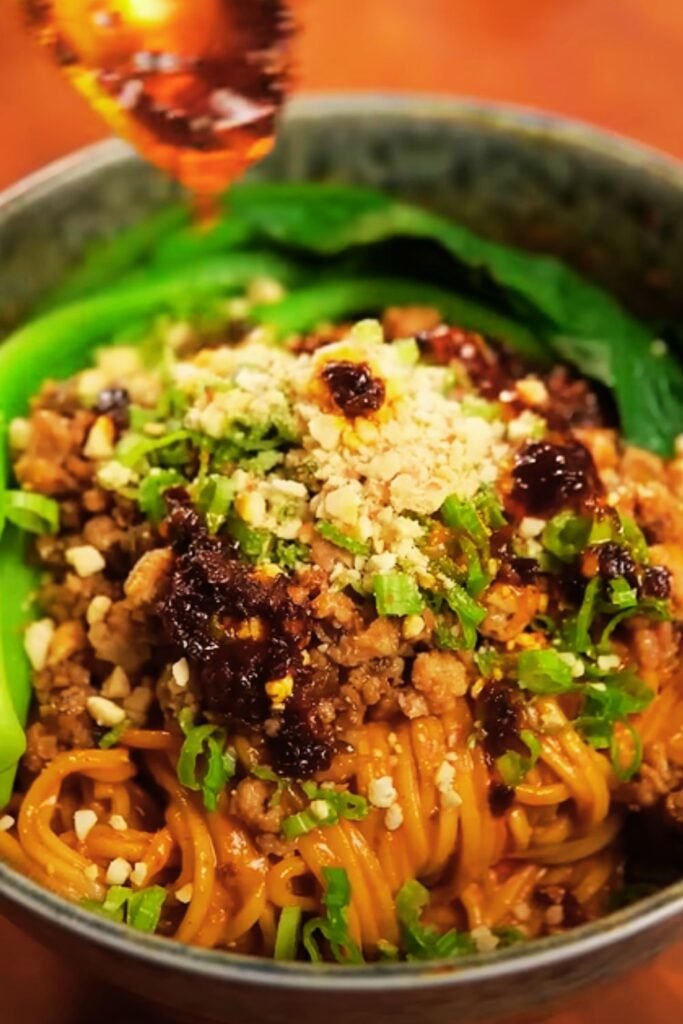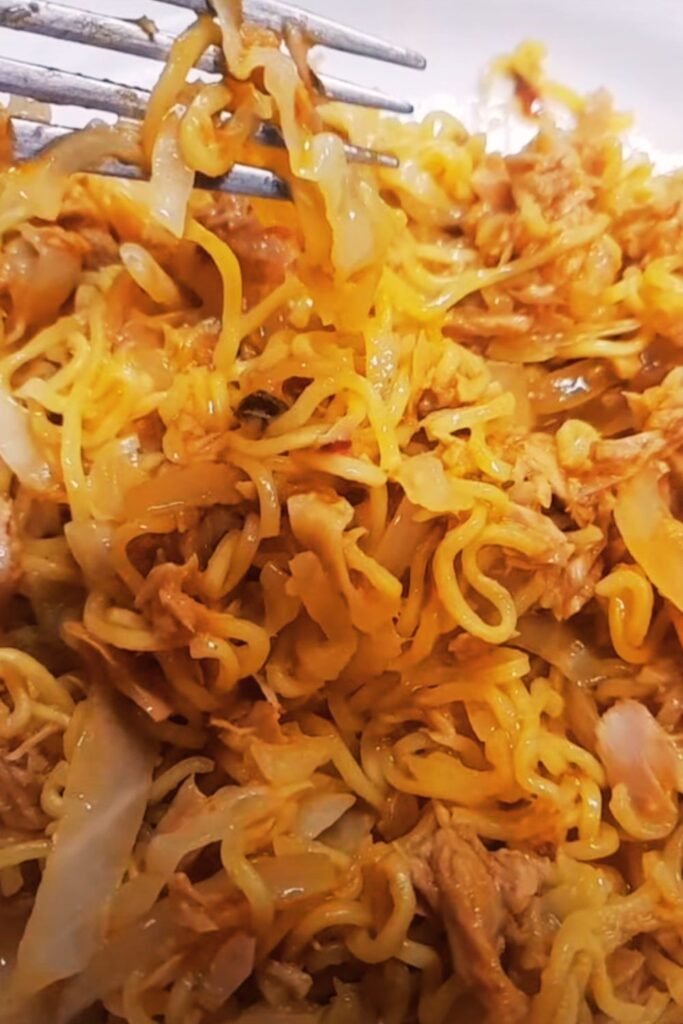There’s something magical about comfort food that crosses cultural boundaries. Today, I’m excited to share one of my absolute favorite comfort dishes that’s been warming hearts and bellies for generations: Haluski. This humble yet delicious cabbage and noodle dish originated in Eastern European cuisine, particularly in Slovak, Polish, and Ukrainian cooking traditions. What makes it so special? The beautiful simplicity that transforms everyday ingredients into something truly extraordinary.
When I first discovered Haluski in my grandmother’s kitchen, I was amazed by how such basic ingredients—cabbage, onions, noodles, and butter—could create something so incredibly satisfying. The secret lies in the slow caramelization of the cabbage and onions, which brings out their natural sweetness and creates an incredible depth of flavor. It’s the perfect example of how peasant foods often contain the most profound culinary wisdom.
Whether you’re looking for an easy weeknight dinner, a comforting side dish, or a taste of Eastern European heritage, Haluski delivers on all fronts. The best part? It’s incredibly forgiving and adaptable, making it perfect for both novice cooks and seasoned chefs alike.
What Is Haluski?
Haluski (pronounced hah-LOOSH-key) is a traditional Eastern European dish featuring egg noodles and cabbage sautéed in butter until tender and lightly caramelized. The dish has deep roots in Slovak, Polish, Hungarian, and Ukrainian cuisines, with regional variations abounding throughout Central and Eastern Europe.
In its most authentic form, Haluski actually refers to the dumplings or noodles themselves, rather than the complete dish. However, in American-Slovak communities and modern interpretations, Haluski has come to represent the entire cabbage and noodle combination. Some regions add bacon or kielbasa for extra flavor, while others keep it vegetarian, allowing the natural sweetness of caramelized cabbage to shine.
What makes this dish truly special is its extraordinary flavor-to-effort ratio. With just a handful of ingredients and straightforward technique, you can create a dish that tastes like it took hours to develop those complex flavors.
Why You’ll Love This Recipe
- Simple ingredients: Uses pantry and refrigerator staples you likely already have on hand
- Budget-friendly: Feeds a family for just a few dollars
- Versatile: Works as both a main dish or hearty side
- Customizable: Easy to adapt with add-ins like bacon, kielbasa, or various seasonings
- Comforting: The perfect warming dish for cold days
- One-pot wonder: Minimal cleanup required
- Crowd-pleaser: Appeals to both adults and children
- Make-ahead friendly: Tastes even better the next day
Ingredients Breakdown
For this classic Haluski recipe, you’ll need:
| Ingredient | Quantity | Notes |
|---|---|---|
| Green cabbage | 1 medium head (about 2-3 pounds) | Look for a firm, heavy cabbage with crisp leaves |
| Yellow onions | 2 large | Sweet onions work wonderfully too |
| Unsalted butter | 8 tablespoons (1 stick) | Real butter makes a big difference; no substitutes here! |
| Egg noodles | 12 ounces | Wide or extra-wide egg noodles are traditional |
| Salt | 1-2 teaspoons | To taste; remember to salt your pasta water too |
| Black pepper | 1/2 teaspoon | Freshly ground is best |
| Caraway seeds (optional) | 1 teaspoon | Adds authentic Eastern European flavor |
| Fresh parsley | 2 tablespoons | For garnish |
| Bacon or kielbasa (optional) | 8 oz bacon or 12 oz kielbasa | For a non-vegetarian version |
| Sour cream | For serving | Optional but highly recommended |
Kitchen Equipment Needed
- Large pot for boiling noodles
- Large, deep skillet or Dutch oven (12-inch minimum)
- Sharp chef’s knife
- Cutting board
- Colander
- Wooden spoon or heat-resistant spatula
- Measuring spoons
Step-by-Step Instructions
Preparation
- Prepare the cabbage: Remove the outer leaves and core of the cabbage. Slice it in half, then cut into thin strips about 1/4 inch wide. Don’t worry about uniformity—rustic is perfect for this dish!
- Prepare the onions: Peel the onions and slice them into thin half-moons.
- If using bacon: Cut into 1/2-inch pieces.
- If using kielbasa: Slice into 1/4-inch rounds or half-moons.
Cooking the Haluski

- Cook the noodles:
- Bring a large pot of salted water to a rolling boil.
- Add the egg noodles and cook according to package directions until al dente (usually 7-9 minutes).
- Drain well but do not rinse.
- If using bacon or kielbasa:
- In your large skillet or Dutch oven, cook the bacon over medium heat until crisp, or brown the kielbasa slices until golden.
- Remove from the pan and set aside, leaving the rendered fat in the pan.
- Add 4 tablespoons of butter to the pan with the meat drippings.
- For vegetarian version:
- Melt 6 tablespoons of butter in your large skillet or Dutch oven over medium heat.
- Cook the vegetables:
- Add onions to the melted butter and cook for 3-4 minutes until they begin to soften.
- Add the sliced cabbage to the pan. It will seem like a lot but will cook down significantly.
- Season with salt, pepper, and caraway seeds if using.
- Cook, stirring occasionally, for 15-20 minutes until the cabbage is very tender and begins to caramelize. This is where the magic happens! Don’t rush this step—the longer, slower cooking develops the sweet flavor.
- Combine:
- Add the drained noodles to the cabbage mixture.
- Add the remaining 2 tablespoons of butter.
- Gently toss everything together until well combined and the butter is melted.
- If using bacon or kielbasa, fold it back in now.
- Taste and adjust seasoning as needed.
- Serve:
- Transfer to a serving dish or individual plates.
- Garnish with chopped fresh parsley.
- Offer sour cream on the side if desired.

Tips for Perfect Haluski
- Don’t rush the cabbage: The key to exceptional Haluski is properly caramelized cabbage. Take your time and let it cook until it’s tender and golden brown in spots. This develops the natural sugars and creates that distinctive sweet-savory flavor.
- Use real butter: This dish is very simple, so each ingredient matters. Real butter provides richness and flavor that margarine or oil simply can’t match.
- Season properly: Cabbage needs adequate salt to shine. Taste as you go and don’t be afraid to adjust the seasoning.
- Slightly undercook the noodles: Since they’ll continue cooking briefly when added to the cabbage mixture, cooking them to just al dente ensures they won’t become mushy.
- Let it rest: Like many comfort foods, Haluski actually tastes even better after the flavors have had time to meld. Making it slightly ahead and letting it rest for 15-20 minutes before serving can enhance the flavor.
Variations and Add-ins
One of the things I love most about Haluski is its versatility. Here are some popular variations:
Protein Additions
- Bacon Haluski: Probably the most common variation, adding smoky, salty bacon takes this dish to new heights.
- Kielbasa Haluski: Sliced Polish sausage adds heartiness and flavor.
- Ham Haluski: Leftover ham works beautifully in this dish.
Vegetable Additions
- Mushroom Haluski: Sauté 8 ounces of sliced mushrooms with the onions for an earthy flavor.
- Carrot Haluski: Add 1 cup of julienned carrots for color and sweetness.
- Garlic Haluski: Add 2-4 minced garlic cloves in the last minute of cooking the cabbage.
Dairy Variations
- Cottage Cheese Haluski: Fold in 1 cup of cottage cheese just before serving for added creaminess and protein.
- Extra Cheesy: Sprinkle with 1/2 cup of shredded sharp cheddar or Parmesan cheese while hot.
Seasoning Variations
- Paprika Haluski: Add 1 tablespoon of Hungarian paprika for color and mild pepper flavor.
- Dill Haluski: Add 2 tablespoons of fresh chopped dill for a bright flavor.
- Spicy Haluski: Add 1/4 teaspoon of red pepper flakes for a gentle heat.
Make-Ahead and Storage Information
Haluski is one of those rare dishes that actually improves with time, making it perfect for meal prep or leftovers.
Make-Ahead
You can prepare Haluski up to 2 days in advance. Simply reheat gently on the stovetop with a splash of water or broth and an extra pat of butter to refresh it.
Storage
- Refrigerator: Store cooled leftovers in an airtight container for up to 4 days.
- Freezer: While not ideal for freezing due to the texture of the noodles, you can freeze Haluski for up to 2 months in a freezer-safe container. Thaw overnight in the refrigerator before reheating.
Reheating
- Stovetop: Reheat in a skillet over medium-low heat with a splash of water and additional butter if needed.
- Microwave: Heat in 30-second intervals, stirring between each, until warmed through.
Nutrition Information
While Haluski isn’t necessarily a low-calorie dish (butter is a key ingredient, after all!), it does offer some nutritional benefits, especially when made with wholesome ingredients.
| Nutrient | Amount per Serving | % Daily Value |
|---|---|---|
| Calories | Approximately 320 per 1 cup serving | – |
| Total Fat | 18g | 23% |
| Saturated Fat | 10g | 50% |
| Cholesterol | 65mg | 22% |
| Sodium | 420mg | 18% |
| Total Carbohydrates | 32g | 12% |
| Dietary Fiber | 3g | 11% |
| Sugars | 5g | – |
| Protein | 8g | 16% |
| Vitamin C | 45mg | 50% |
| Calcium | 50mg | 4% |
| Iron | 1.8mg | 10% |
Nutrition values are estimates only and will vary based on specific ingredients and portion sizes.
Serving Suggestions

Haluski works beautifully as either a main dish or a side. Here are some of my favorite ways to serve it:
As a Main Course
- Serve with a simple side salad for a lighter meal
- Pair with crusty rye bread and butter
- Add a dollop of sour cream on top and sprinkle with fresh herbs
- Serve alongside pickled vegetables for a traditional Eastern European meal
As a Side Dish
- Pairs perfectly with roasted pork or ham
- Serves as an excellent complement to grilled sausages
- Works well alongside any roasted meat
- Complements hearty stews and goulash
The Cultural Significance of Haluski
Haluski isn’t just food—it’s a cultural touchstone for many Eastern Europeans and their descendants. This dish reminds many of family gatherings, grandmothers’ kitchens, and the comfort of home-cooked meals that sustained generations through both good times and challenging ones.
In Slovak communities, Haluski has been a staple for centuries, often prepared for special occasions and family gatherings. The dish represents the ingenuity of home cooks who could create satisfying, delicious meals from just a few humble ingredients.
In many immigrant communities across America, particularly in Pennsylvania, Ohio, and other parts of the Midwest with significant Eastern European populations, Haluski remains a beloved dish that connects people to their heritage. You’ll often find it served at church suppers, community festivals, and family celebrations.
What I find most remarkable about Haluski is how it has evolved while maintaining its essential character. Each family seems to have their own special twist—a little more butter, a particular way of cutting the cabbage, or a secret ingredient passed down through generations. These small differences make each version unique while still honoring the dish’s humble origins.
Frequently Asked Questions
Q: What kind of noodles should I use for authentic Haluski?
A: Traditional Haluski uses homemade egg noodles or dumplings, but store-bought egg noodles work perfectly well. Look for wide or extra-wide egg noodles for the most authentic texture. In a pinch, you can even use fettuccine pasta, though the texture will be slightly different.
Q: Can I make Haluski ahead of time for a party?
A: Absolutely! Haluski actually tastes even better after the flavors have had time to meld. You can make it up to 2 days in advance and reheat gently on the stovetop with a small splash of water or broth and an extra pat of butter to refresh it.
Q: Is Haluski vegetarian?
A: The basic version with just cabbage, onions, noodles, and butter is vegetarian (though not vegan due to the butter and egg noodles). Many traditional recipes add bacon or kielbasa, but these are optional additions rather than essential components.
Q: My family is watching their fat intake. Can I reduce the amount of butter?
A: While butter is traditional and provides much of the flavor, you can reduce it somewhat. I wouldn’t go below 4 tablespoons total for a full recipe, as the butter is essential for properly sautéing the cabbage and creating the silky sauce that coats the noodles. Using a high-quality butter can allow you to use less while still getting great flavor.
Q: What type of cabbage works best for Haluski?
A: Green cabbage is traditional and works perfectly. Savoy cabbage can also work well and has a slightly more delicate texture. Red cabbage isn’t typically used for Haluski as it would discolor the dish and has a slightly different flavor profile.
Q: How do I prevent my Haluski from becoming mushy?
A: Three key tips: First, don’t overcook your noodles—keep them al dente. Second, make sure your pan is large enough that the cabbage can properly sauté rather than steam. Third, don’t cover the pan while cooking the cabbage; you want the moisture to evaporate so the cabbage can caramelize rather than steam.
Q: Can I add other vegetables to my Haluski?
A: While traditional Haluski is simple, you can certainly add other vegetables. Carrots, bell peppers, or mushrooms work well. Just be aware that adding too many vegetables with high water content may prevent proper caramelization of the cabbage, which is key to the dish’s flavor.
Q: Why do some recipes include cottage cheese in Haluski?
A: Adding cottage cheese is a regional variation that makes the dish creamier and higher in protein. It’s not strictly traditional in all areas but is popular in some Eastern European communities and adds a nice dimension to the dish.
Final Thoughts on Haluski
There’s something profoundly satisfying about taking humble ingredients and transforming them into something extraordinary. Haluski embodies this culinary alchemy—converting simple cabbage, onions, noodles, and butter into a dish greater than the sum of its parts.
What I love most about Haluski is its honest simplicity. It doesn’t pretend to be fancy or complicated. Instead, it celebrates basic ingredients prepared with care and respect for tradition. The magic lies in the slow caramelization process, which draws out the natural sweetness of the cabbage and onions, creating layers of flavor that seem impossible from so few ingredients.
Whether you’re cooking to connect with your Eastern European heritage or simply looking for a satisfying, budget-friendly meal, Haluski delivers comfort in every bite. It’s the kind of dish that makes you want to gather around the table with loved ones, sharing stories as you savor each forkful.
I encourage you to make this recipe your own. Perhaps you’ll add a family twist that becomes your signature version, creating your own tradition to pass down. After all, that’s how beloved dishes evolve through generations—each cook adding their personal touch while honoring the dish’s essence.
So the next time you’re looking for something comforting, economical, and delicious, remember this humble Eastern European classic. I promise your kitchen will smell amazing, and your taste buds will thank you!